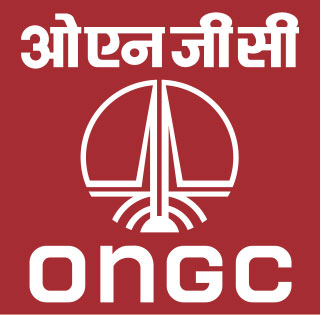HSE Meet to Assess the Journey of Project Parivartan
The Health, Safety and Environment (HSE) Meet was organized at Jodhpur by Rajasthan Kutch-Onland Exploratory Asset (RKOE) Asset and Corporate HSE from 20 - 21 November 2022 to assess the journey of Project Parivartan by analyzing the progress of Ten Syndicates on Strategic HSE goals of Health, Safety, and Environment.
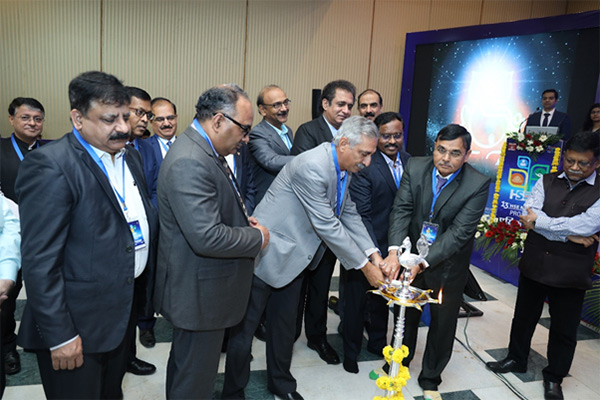
HSE is of utmost importance to sustain the oil and gas business of ONGC. To strengthen the safety culture of the Organisation, ONGC embarked on the journey of CHANGE, and Project Parivartan was launched in May 2022.
The meeting was chaired by Director (Onshore) - I/c HSE Anurag Sharma, in presence of Chief Vigilance Officer (CVO) Ranjan Prakash Thakur. The meeting was attended by the Key Executives and Senior Officers of ONGC who are a part of the Ten Syndicates.
Director (Onshore) said that all efforts in improving the HSE performance of the organization are successful only when there are lesser accidents, fatalities, and audit points. He also mentioned that the oil and gas industry, unlike most others, operates 24 hours a day, around the world — the need to manage risk never ends but managing the risk is in our hands. Developing a culture of safety is akin to a journey. Until an organization reaches the point where everyone owns the system and believes in it until it enters the hearts and minds of the people to become a very part of who they are as a company, the system and culture of safety are not sustainable. The culture of safety must enter the heart and minds of all personnel and percolate down to the last person.
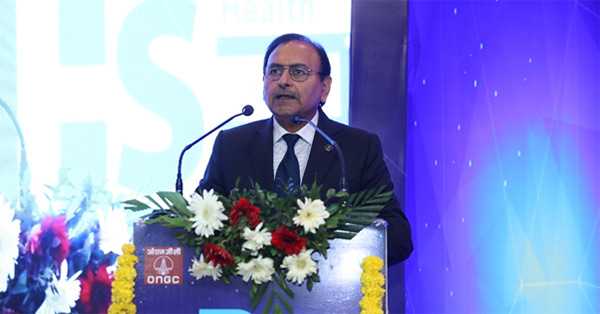
Highlighting the importance of operating safely, Director (Onshore) said that this will automatically lead to an increase in efficiency which would help us achieve our targets and also enable us in leaping forward.
Director (Onshore) further stressed that Safety is not proprietary. All Employees seek to learn continuously. It is by constant learning and analyzing – by looking at best practices in other organizations, examining incidents, near misses, and learning lessons – that each one of us can continually improve our safety performance. He stated that to have a reality check of ONGC’s safety systems, an initiative was taken to engage M/s DNV.
Director (Onshore) elaborated that Behaviour Based Safety is one of the most important aspects of safety, based on stimulus-response theory. It is to be ensured that unsafe behaviours are stopped and safe behaviours are observed. A few targets under Project Parivartan are planned up to May 2027, but most of the goals are planned to be achieved much earlier. The activities are required to be fast-tracked and the progress shall be monitored quarterly for enabling the achievements in timelines.
He mentioned that this meet is structured on a Syndicate basis to cover threadbare the major aspects and provide an open, free, and decisive platform for the critical exchange of ideas amongst the participants and recommend measures for catalyzing the transformation of safety culture within ONGC.
Earlier, CVO while wishing the success of the Program conveyed his interest to learn from the deliberations of the meeting.
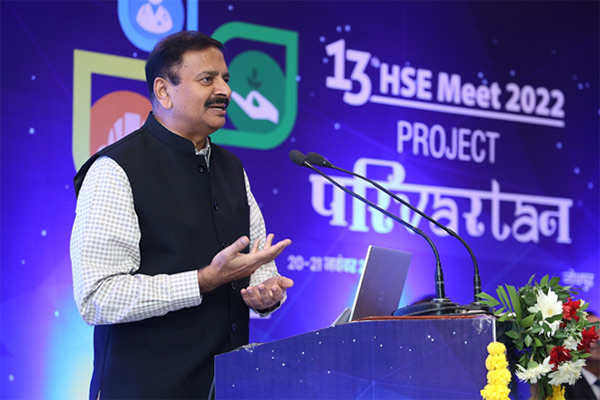
He concluded, “We need to be more actually oriented and get things moving on the ground what I could see is action was more on the training part other factors, like approvals and commitments need to move faster. Some decisions should not wait, should be taken at the earliest possible, because typically in my career, I have realized that taking a long decision or letting it linger on for too long is always been a bigger crisis for me. The best are here. ONGC cannot look for more talent from anywhere else. You have a technical consultancy in the technical partner, in terms of Planning & Budgeting (P&B), and after that, you are the very best of the organization. Little anybody else can now tell you what’s right, and wrong with you. You are here as a decision-maker, you need to take ahead and move on a lot of issues.
He said, “Decision-making needs to be faster and implemented on the ground earlier than what we think. Decide, move ahead, don’t let it linger on waiting for the next problem to happen then decide.”
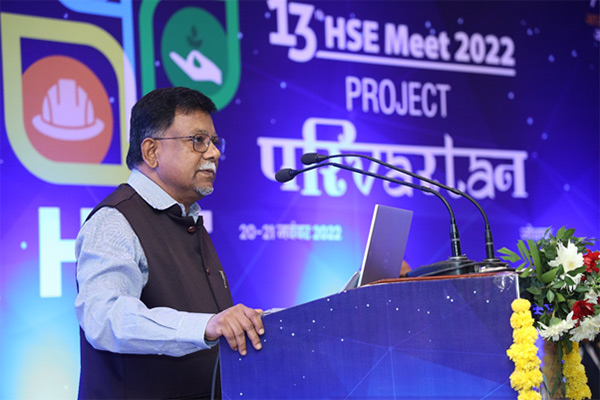
In his welcome address, ED- Asset Manager RKOE Asset Rajat Basu gave a brief context of the meet to the participants in the meeting on crucial Project Parivartan.
In his opening remarks, ED- Chief HSE Ajay Dixit briefed the importance of Project Parivartan and sought the support of Key Executives in providing direction, guidance, and motivation to the workforce and channelizing the resources for enabling successful completion of Project Parivartan within timelines. He iterated that team ONGC shall achieve all objectives within the stipulated timelines of Project Parivartan.
Later, Head Safety Arshad Hussain made a presentation on the brief of the plan, strategy, and achievements of Project Parivartan. He informed about the various measures undertaken to build up the risk competencies and awareness at all levels of ONGC, right from EC members, Key Executives, L-1, L-II, L-II officials, middle management, and line management. He further informed that programs have also started for safe behaviour management. All these measures shall help in developing a resilient safety culture.
Harsh Arora from M/s DNV presented the updations being done in the HSE Management System Manual, which is the apex document of HSE management of ONGC.
Following were the 10 Syndicates, presenting 10 strategic HSE Goals:
Syndicate-1: Achieve leadership excellence culture by 2025
The first Syndicate presented the planning and way forward on achieving a culture of leadership excellence with an average score of 90% for the leadership process by 2025.
Syndicate-2: Improving management system culture by achieving an average safety rating of 7/10 by 2025
The Syndicate stressed upon the improvement in the management system culture by achieving an average safety rating of at least 7 out of 10 across all installations by 2025.
Syndicate-3: Transforming the prevailing bureaucratic culture to learning organization culture by 2027
The Syndicate discussed transforming the prevailing bureaucratic system culture to a learning organization culture by 2027.
Syndicate-4: Building risk competency based on training needs analysis by 2025
The presentation by the fourth Syndicate focused on building risk competency, based on training needs analysis, by 2025 through mapping of roles, defining the competencies gap analysis, and identifying the relevant training programs.
Syndicate-5: Ensuring total safety of Asset through Asset Integrity Management by 2027
The Syndicate presented the importance of Asset Integrity Management through systematic implementation through a focused group and employing various tools to establish a structured asset integrity management system.
Syndicate-6: Ensure a risk-based Contractor Management System by 2023
The Syndicate presented measures to strengthen risk-based Contractor Management System and fast-tracking purchase issues related to safety.
Syndicate-8: Design, Create and Implement Safety Management System Benchmarking (Internal & External) by 2025
The Syndicate presented the development which will improve Benchmarking for a measurable HSE performance.
Syndicate-9: Resorting to green initiatives for zero-emission pathway in the backdrop of the climate crisis
The presentation by Syndicate showcased the initiatives in green energy, measures undertaken for the smooth environment-related clearance processes, and strategies for reducing carbon emissions, among other environment-related measures and planning.
Syndicate-10: Elimination/mitigation of occupation-related health impacts & introduction of new initiatives for health improvement
The Syndicate discussed various measures undertaken and measures planned for improving the Occupational Health related issues of the organization.
M/s DNV summarised and presented the key takeaway of all deliberations during presentations by all syndicates.
Presentations were also made by outside agencies of various technologies and tools in HSE.
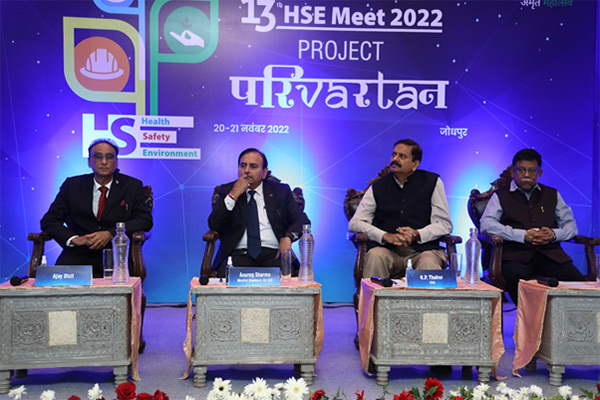
Director (Onshore) reiterated that though the work is going on for achieving the targets of Project Parivartan, it was very important that we adhere to timelines and plan to achieve all targets as per commitments by all syndicates. He again stressed that the project progress as recommended by various syndicates shall be monitored every quarter in HSE Meets.
Director Onshore concluded, “I just want to put a few words of appreciation about where have we reached. If I look at behind perhaps of safety meetings I had, we used to have these meetings when safety council meetings just to be there, and we used to discuss various incidents and how to minimize. What is the road map? Now, I am very happy with the commitment provided by all of you. I have put in so much work so we have reached this, for we have to do a little more what’s you putting up, and with the coordination of the chief HSC I am very certain that we will be moving in the right direction and will reach our objectives. I request you to coordinate more, and have more frequent meetings, and please share whatever you learnt here with the youngsters back at your work centers.”

